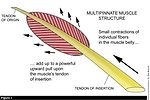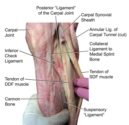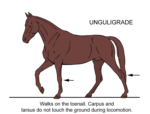Advertise Follow Us
Articles Tagged with ''Equine Anatomy''
Equine Reciprocating Systems: Do You Know the Nuts and Bolts of the “Orthopedic Trim?”
Farriers test their knowledge about how the forelimb functions
Read More
Equine Reciprocating Systems: New Parts and Novel Attachments
Understanding the anatomical parts and novel attachments critical to reciprocating systems in the modern-day equine will lay the farrier’s groundwork for achieving soundness
Read More
Equine Reciprocating Systems: Interosseous Muscles to the Suspensory Apparatus
In this second in a series, Dr. Deb Bennet continues a discussion of the horse’s forefoot becoming a single digit.
Read More
Increased Knowledge of the Equine Anatomy Can Help Farriers Improve Hoof Care
The choices farriers make in trimming and shoeing should take into account bones, tendons and other internal structures of the limbs
Read More
News & Notes
Farriers Hold Fast To Their Trade
Some overseas farriers are facing threats to the centuries' old craft.
Read More
Web-Exclusive Feature
Hoof Beats: The Language Of Conformation
Understanding some anatomy terms will make for better conversations with veterinarians
Read More
Web-Exclusive Feature
Hoof Beats: Point Of View
Foal conformation can change depending on one’s perspective
Read More
[Podcast] An Interview with Mitch Taylor
In this episode of the American Farriers Journal podcast, brought to you by the International Hoof-Care Summit, we welcome the owner and operator of the Kentucky Horseshoeing School, Mitch Taylor.
Read More











